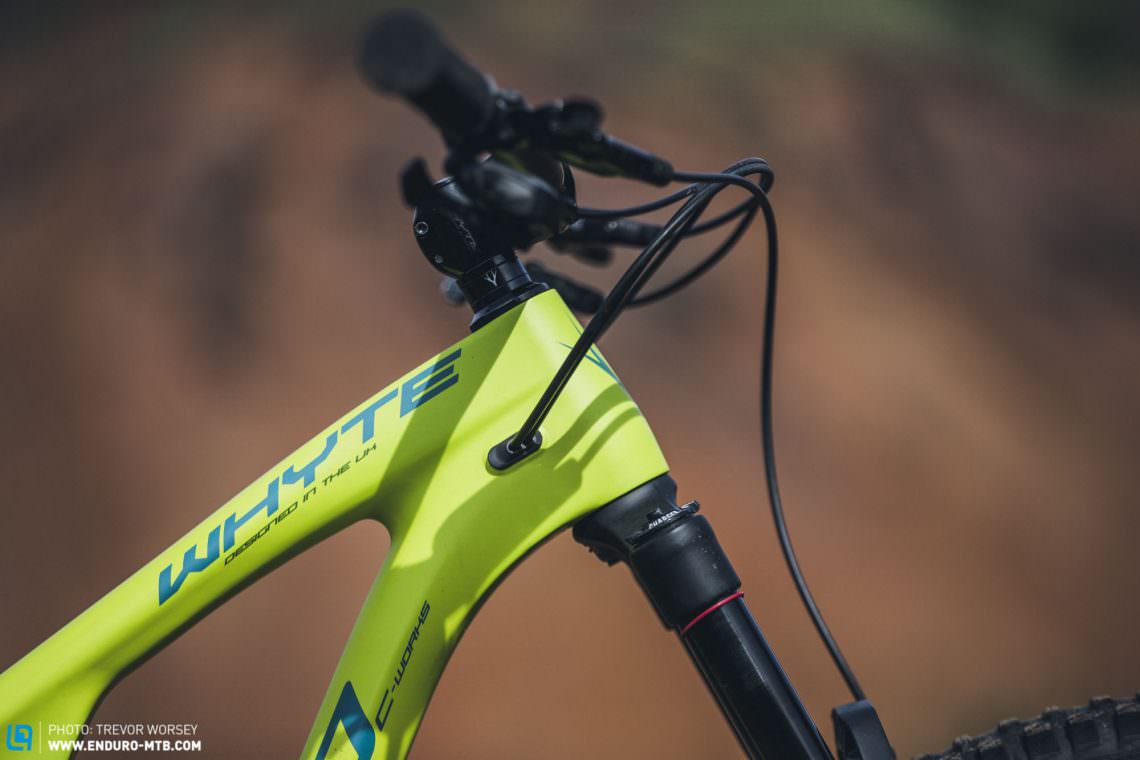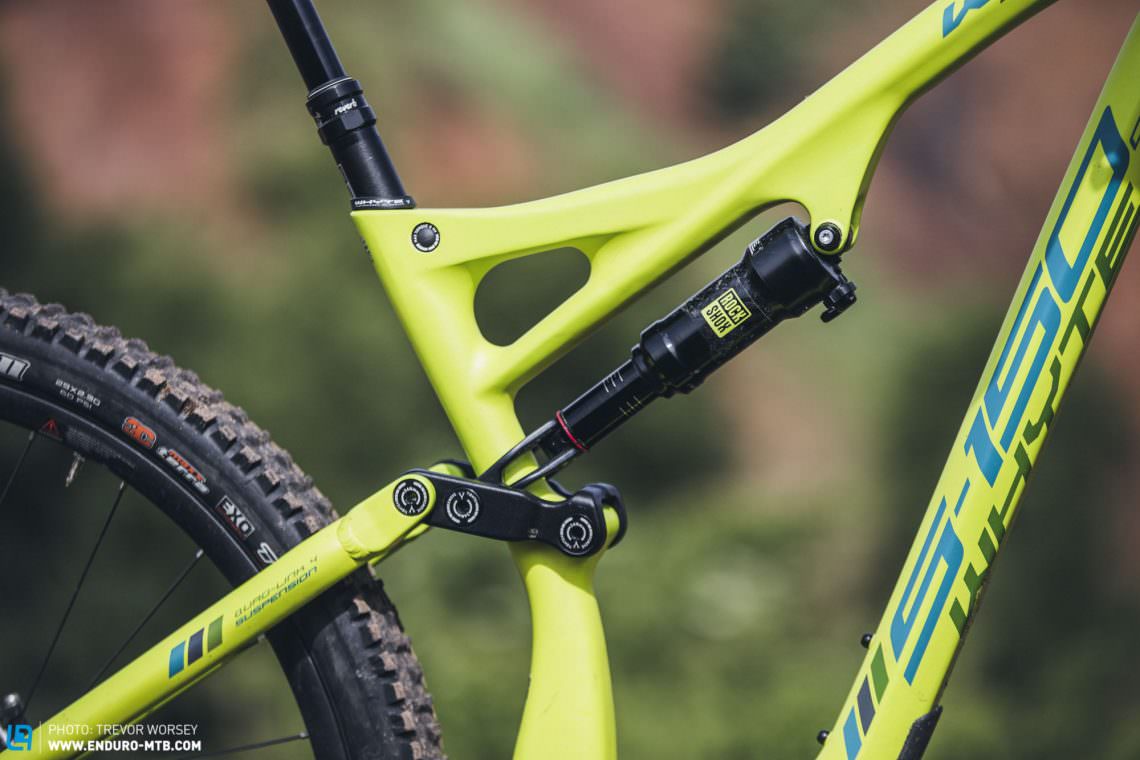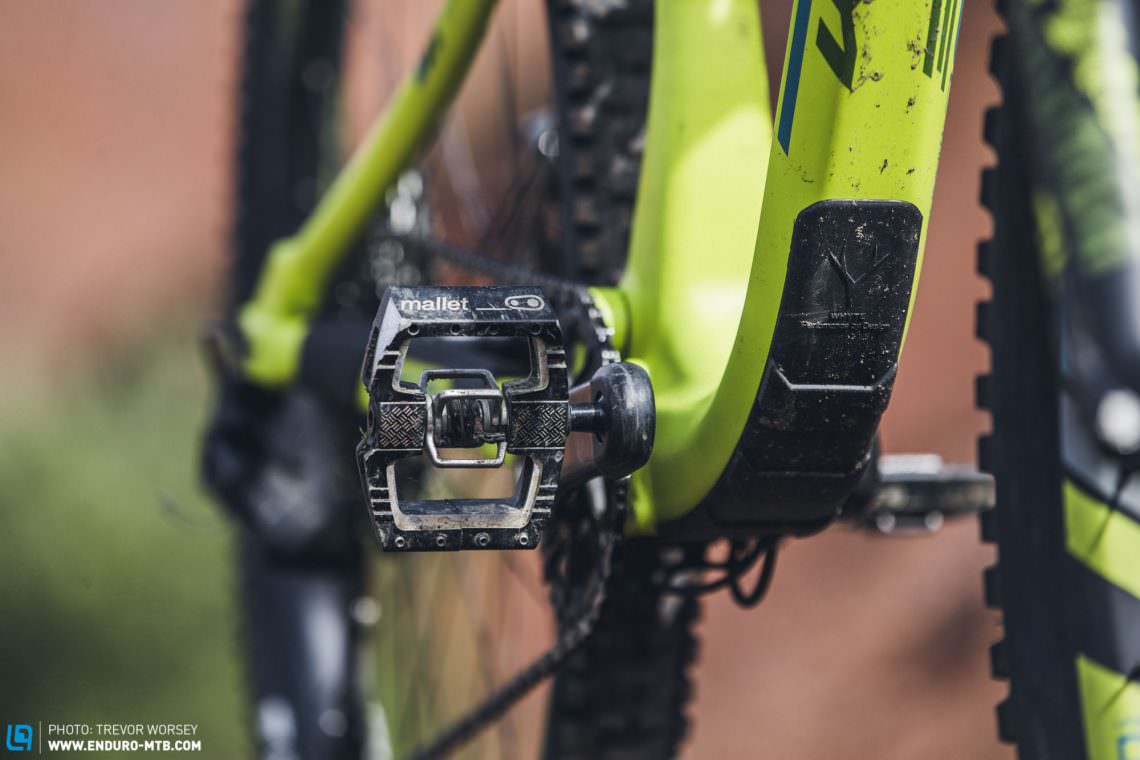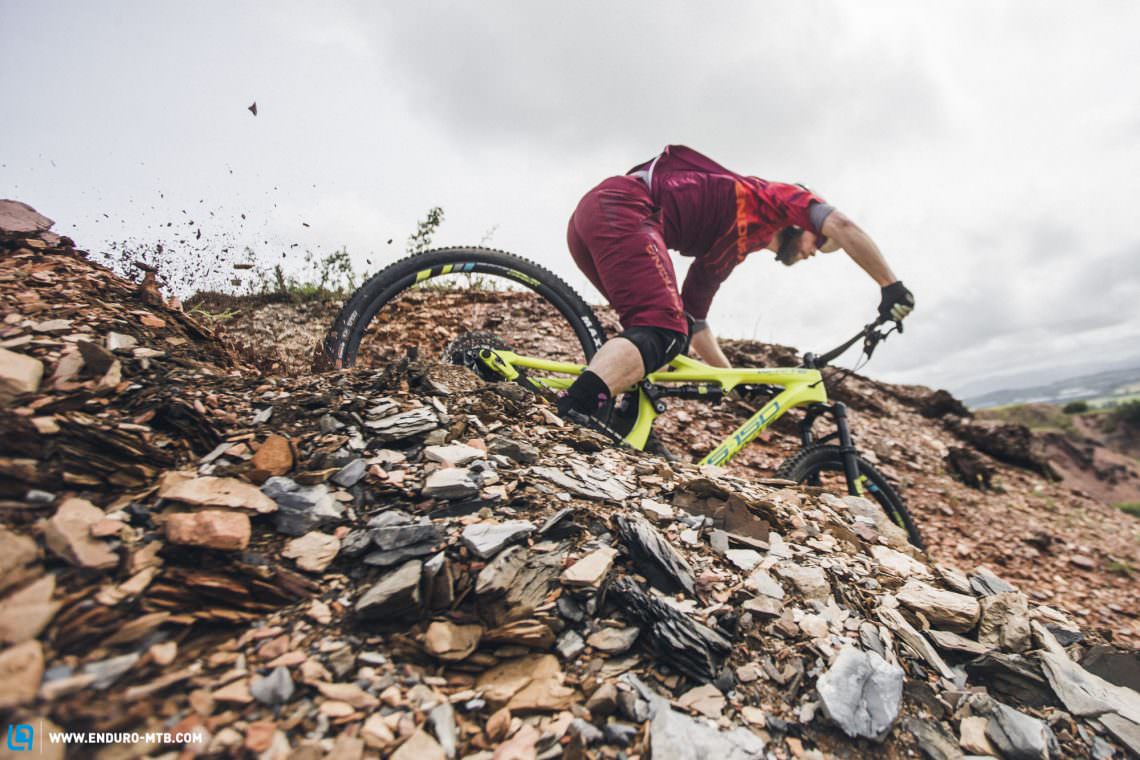Targeted firmly at the aggressive trail/enduro rider the new Whyte S-150 29er claims to be the “Longer travel, super-capable go anywhere hard-core UK trail bike, from local trails to the toughest Enduro World Series stages.” Bold claims indeed, but can any trail bike truly rock on home and race stages? We have been throwing one around for two months to find out.

Long travel 29ers are hot property at the moment, combining brutal speed with a new-found agility we are seeing more and more take to the start line of races, or claiming KOMs on local trails. Whyte has been making some great bikes recently, the T-130c and the G-160 both pushed the boundaries, but they did not really have a big hitting 29er in their stable. Enter the S-150, a bike that blends all Whyte’s aggressive geometry ideals with the big wheel format. We have been riding the top-of-the-line £ 5,499 Works model for two months now, with a full SRAM XX1 Eagle 12-speed drivetrain and Whyte 30 mm hookless, tubeless ready carbon rims. A more affordable £ 3,850 RS model is available with the same frame, but a SRAM GX Eagle drivetrain and RaceFace ARC 35 rims. For those on a budget, a full aluminium S-150 S comes fitted with a GX Eagle drivetrain, WTB STp i29 rims, and a RockShox Revelation fork, for only £ 2,850.
Fork RockShox Pike RCT3 150 mm
Shock RockShox Deluxe RT3 150 mm
Brakes SRAM Guide RSC
Drivetrain SRAM XX1
Seatpost RockShox Reverb Stealth 150 mm
Stem Whyte Gravity 40/50 mm
Handlebars Race Face SIXC Carbon 800 mm
Tires Maxxis High Roller II / Maxxis Crossmark II
Hubs/Rims Hope Pro 4 / Whyte 30 mm Carbon
Price £ 5,499

What does the S in S-150 stand for?
The ‘S’ in the S-150 stands for Switchable. Borrowing from the world of F1 and the ‘option’ of racing slicks, buyers of the S-150 can choose the ‘option’ of purchasing and fitting super grippy 27.5” 2.8 wheels and tyres if they suit their home trails. This is a wise move from Whyte, offering the option of both formats without specifying the more niche plus-sized wheels as standard. We have found that while wider 2.8” tyres do not work for every trail if they do they offer insane levels of cornering grip. First off, a disclaimer, we received one of the first bikes in the UK and as such the 2.8 option was not available, so we have only tested the bike in its 29er format, fitted with the standard Maxxis High Roller II TR 2.3, and Maxxis Crossmark II TR tyres – though these were swapped out for something with more grip and bite for most of the testing.


Whyte S-150 Geometry
When it comes to geometry, Whyte has always been somewhat radical, pushing the super long G-150 and G-160 while everyone was else was still thinking of exploring longer and lower. The S-150 is less of a heretic but still boasts generous proportions.
| Size | M | L | XL |
|---|---|---|---|
| Seat tube | 432 mm | 457 mm | 483 mm |
| Standover | 514 mm | 521 mm | 527 mm |
| Head angle | 65.6° | 65.6° | 65.6° |
| Seat angle | 74.7° | 74.5° | 74.3° |
| Chainstays | 435 mm | 435 mm | 435 mm |
| BB Height | 335 mm | 335 mm | 335 mm |
| Stack | 632 mm | 641 mm | 650 mm |
| Wheelbase | 1212 mm | 1232 mm | 1252 mm |
As expected, the reach of the S-150 is very roomy indeed, solid numbers that suggest a good ride. We like that Whyte has moved a little away from their ultra-short chainstays, increasing to 435 mm, as ultra-short chainstays do have a habit of robbing grip from the front wheel on steep trails. The 74.7° seat tube angle is steep enough to suggest efficiency on the climbs and the 65.6° head-angle nudges the S-150 into ‘gravity’ fuelled territory. The seat tube lengths are short enough to squeeze longer dropper posts in for maximum fun, and a 335 mm bottom bracket height suggests confident cornering – the numbers look flipping great!

The Whyte S-150’s custom 42 mm fork offset
While the geometry of the Whyte S-150 may be nothing radical, the same cannot be said for the fork. Working closely with RockShox, Whyte has requested a new 42 mm offset fork, 9 mm shorter than the standard 51 mm (for 29ers). Now, trail and offset are quite complex topics and there are some great resources online, indeed we will be bringing a full #offsetgate story very soon. In a nutshell, the shorter the offset the longer the ‘trail’, the distance between where the tire actually touches the ground and the virtual line if you draw down through the head angle. If you have no ‘trail’ the wheel would spin like that of a supermarket trolley, if you have too much, the wheel will flop around like a beached dolphin. For many years, we have produced long offset forks (normally 51 mm in comparison to a 27.5 fork which is 40 – 44mm) for 29ers in an effort to reduce the ‘trail’ and make them agile, but in many cases, this has just made them nervous at high speeds.

So let’s cut the marketing bullshit, does dropping the fork offset 9 mm from 51 mm to 42 mm make any difference. The answer is simple, damn right it does. The increased ‘trail’ measurement of the Whyte S-150 makes a noticeable difference to the steering. It’s hard to put a finger on but the turn-in and the sharp response is identical to that of any other 65.6° head angled bike, but it feels slacker in the chatter, with less unwanted feedback and deflection from the trail. Pushing the wheel hard into a corner or charging through rock gardens rewards instantly with massive grip and feedback, without any feeling of instability. Blind trails can be hit incredibly fast, safe in the knowledge that the front end is super planted. Switching in a 51 mm offset fork did result in less confidence from the front end so we are 100% behind Whyte’s claims.

Riding the Whyte S-150 Works, the review
We have spent two months on the Whyte S-150 Works, riding everything from the steepest EWS stages and DH tracks to long and slow overnight mountain missions, and it has always been the first bike to be grabbed from the bike storage. Overall, we have been blown away with the versatility of the bike.

We have put in some serious climbing on the S-150 and have a good handle on the performance. Some bikes accelerate up hills like a scalded cat – the Whyte S-150 is not one of those bikes. That’s not saying that it’s a slow climber, far from it, but at 13.8 kg it’s more of an all-rounder than a climbing specialist, climbing comfortably in a way that suggests it will not suck on the way down. The rear suspension has been designed to work with coils as well as air and has a linear feel (heavier riders may want to add some volume reducers), finding grip comes easy and pedal feedback is very well controlled, we found we never really needed to add any damping to the RockShox Deluxe rear shock on the climbs. The bike skips up over broken ground with ease and the kinematics give a good push when you want to crank over those naughty technical sections.

Under power, the frame feels stiff and solid through the linkage, the unbraced seatstays provide just enough lateral flex at the rear to stop the bike skipping during high-speed flat turns. However, it’s the front where the real magic is happening. With the current trend of changing trends, and the new standard of new standards it’s easy to look at something like a ‘new’ trail figure with a sigh of apprehension, but trail IS important, with dramatic implications on handling. Hammering over rock and root the Whyte S-150 is extremely balanced – like any really good trail bike should be – but it’s also more relaxed, the confident and accurate steering holding a line like a charging bull. Even when you hit warp speed and start waiting for the inevitable, the S-150 just keeps on thumping through turn after turn, without the laziness that can come from overly slack bikes.

On super steep trails – the Tweed Valley has some great ones – the combination of reduced offset and lengthened chainstays keep the front wheel well loaded and frankly outrageous cornering is possible – if you have the skills and mental resolve that is. We worried that bringing the wheel 9 mm further back under the rider would result in tucking on steep descents, but the extra reach of the Whyte offsets, well, the offset and even when taking crazy direct lines we felt no tuck. Riding blind trails, the confident and burly handling of the Whyte S-150 mean that you can keep the speed ludicrously high, last-second slash-and-burn corners are its specialty. ‘Charge-brake-rail-repeat’ is the S-150’s mantra, there are few bikes as quick down unknown trails. After 2 months riding over many different trails, we would go as far as to say this is the best handling bike that Whyte have produced – and they make some great bikes – a bike so ridiculously good you can count its direct rivals on one hand.
Conclusion
The Whyte S-150 is a category smasher, as confident thumping into the rockiest EWS stage as it is cruising a mellow all-day mountain epic. People will be quick to write off the short offset fork as another fad, but that would be a mistake – for it’s simply better. The Whyte S-150 is the bike UK riders have been waiting for, versatile, confident, and outrageously fun to ride fast. It’s a bike that works exceptionally well, everywhere and in every way!
For more information, you can check out the Whyte website.
Did you enjoy this article? If so, we would be stoked if you decide to support us with a monthly contribution. By becoming a supporter of ENDURO, you will help secure a sustainable future for high-quality mountain bike journalism. Click here to learn more.
Words & Photos:








